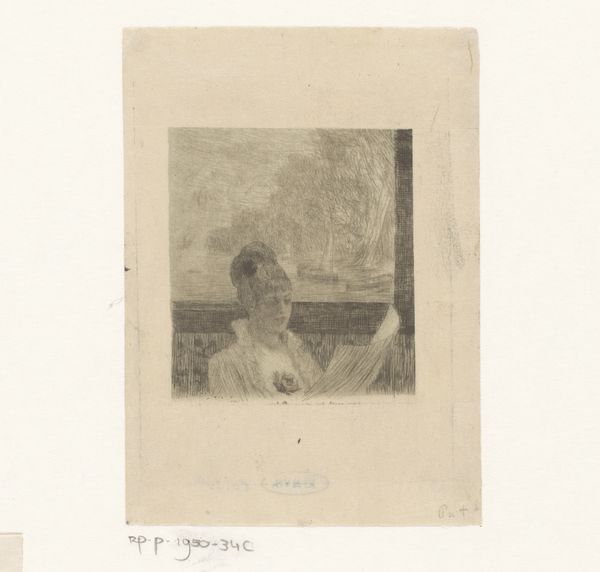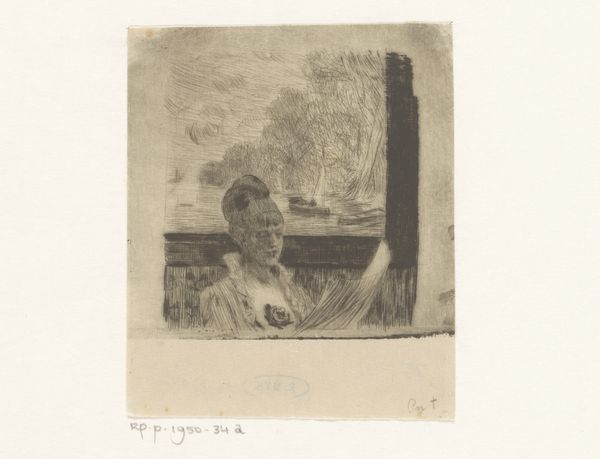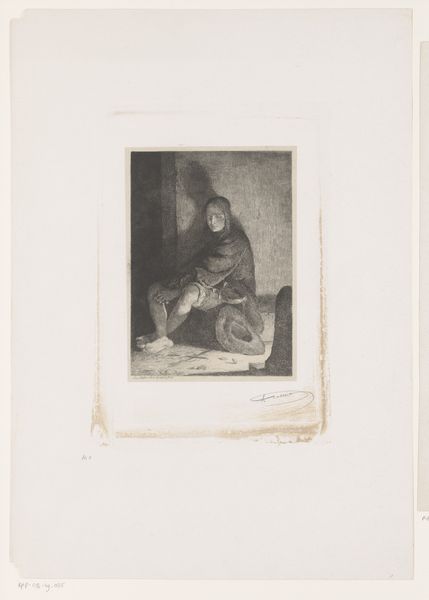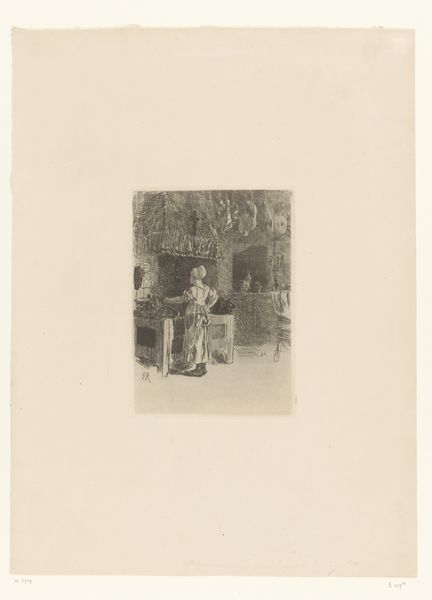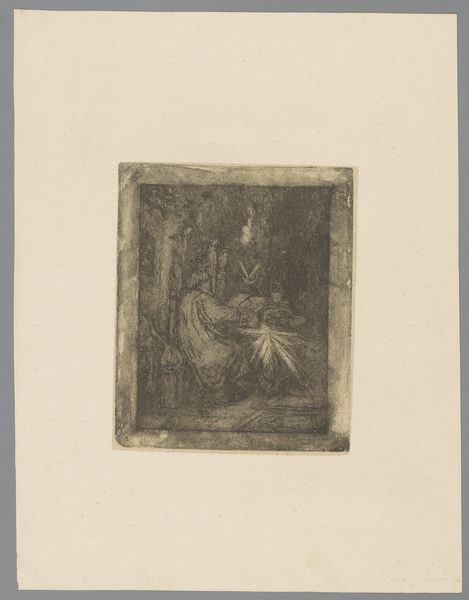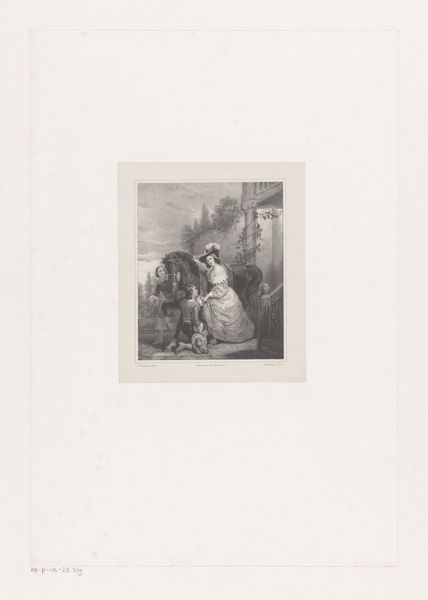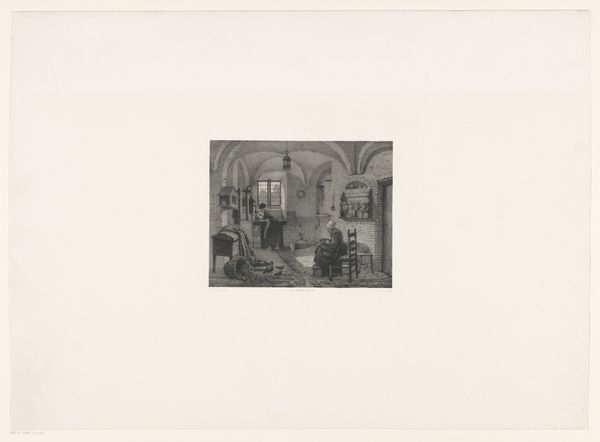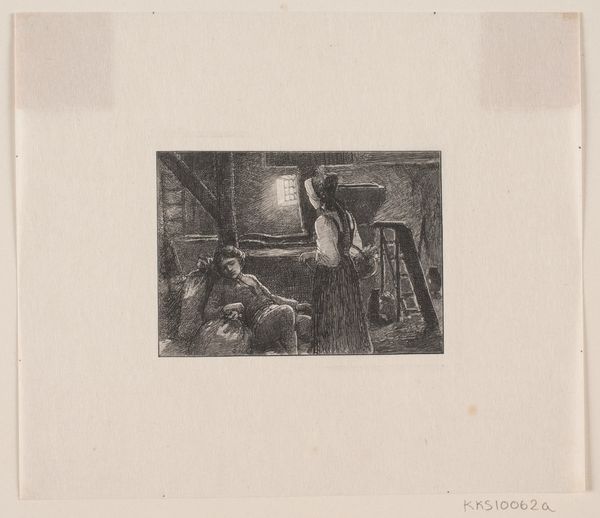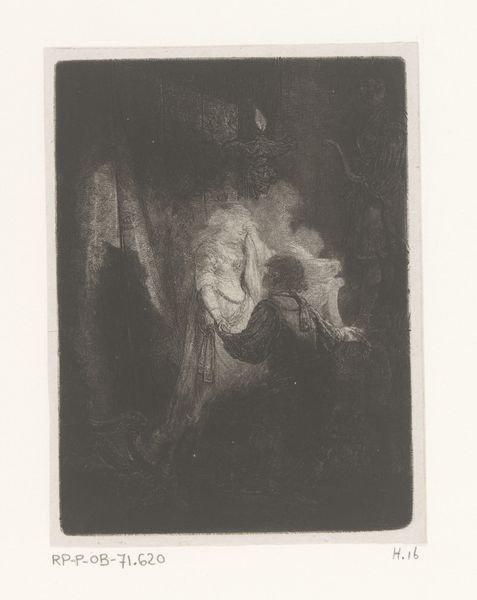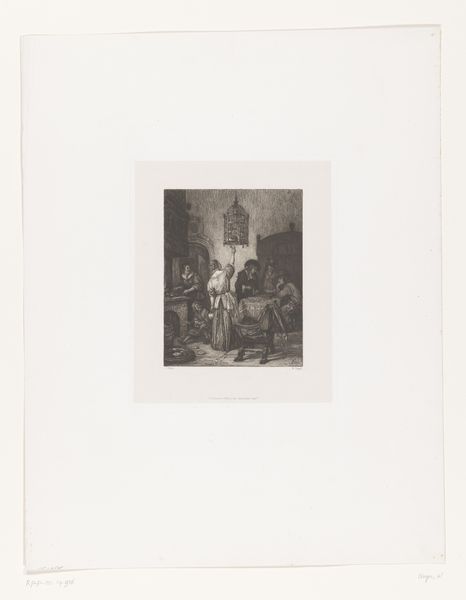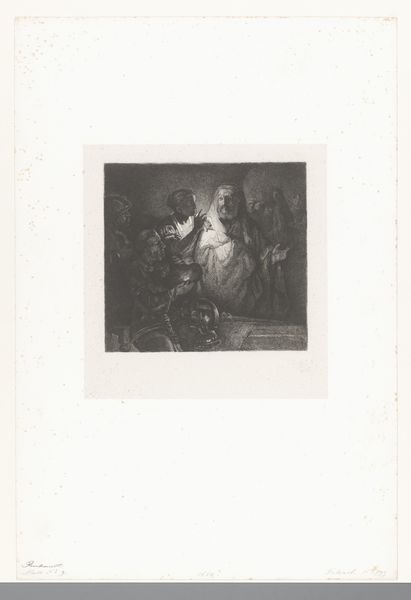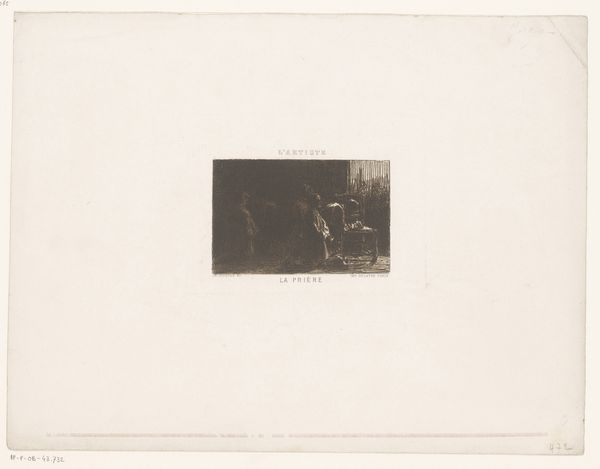
drawing, pencil
#
portrait
#
pencil drawn
#
drawing
#
pencil sketch
#
light coloured
#
pencil drawing
#
romanticism
#
pencil
#
genre-painting
#
history-painting
Dimensions: height 72 mm, width 55 mm
Copyright: Rijks Museum: Open Domain
Curator: This pencil drawing by Jean-Pierre Norblin de la Gourdaine, dating from 1755 to 1830, is titled "Vrouw geeft zieke op bed te drinken" – A woman giving a drink to a sick person in bed. Editor: Immediately, I’m struck by how stark the light is—a single source illuminating such a grim scene. The figure tending to the sickbed looks almost spectral, wouldn’t you say? Curator: The sharp contrast undoubtedly establishes a clear visual hierarchy. Observe how the artist directs the viewer's gaze through strategic tonal variations. The woman's form creates a diagonal that bisects the composition, grounding the drama. Editor: Right. The entire scene funnels down into her hands as she cradles this vessel of hope—or is it? Perhaps the darkness indicates not just sickness, but something more… spiritual. I find myself wondering about the relationship between those two figures. Are they mother and child? Lovers? It is as though she is trying to resurrect the figure on the bed, to save them. Curator: The genre element provides an intimate view into domestic life. The composition draws on familiar tropes seen across Romanticism; look, for example, at the implicit vulnerability made explicit via the patient figure positioned supine. Norblin's handling of light contributes here, with much left suggestive in the obscured recesses of the room. Editor: Exactly. It teases you, doesn't it? I’m also curious about the figure looking on in the upper corner of the piece. This figure watching over the drama unfolds in the lower half. Is it God? Or something a little less concrete? A spirit, perhaps? Curator: Semiotically, this visual component is multivalent and invites speculation about external forces at play and a possible interplay between mortality and belief systems. The artist compels an analytical examination through compositional structuring. Editor: I see it as more than just structure. It resonates on a deeply emotional level—a tender and eerie moment of humanity laid bare through minimal strokes and that profound sense of shadowing. It asks: what we would do when our loved ones suffer? Curator: Well, that interpretive nuance is interesting, and you've given me more to reflect upon regarding how affect might be coded so deftly in its structure. Editor: As for me, I'm moved. A simply yet complex study of humanity.
Comments
No comments
Be the first to comment and join the conversation on the ultimate creative platform.
